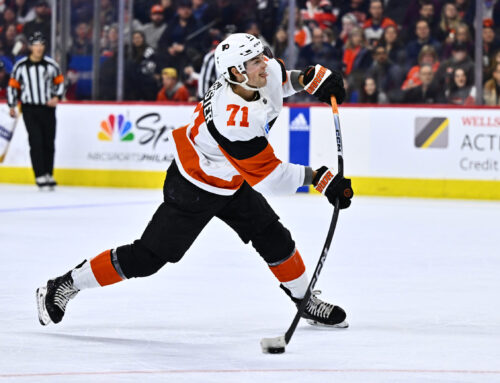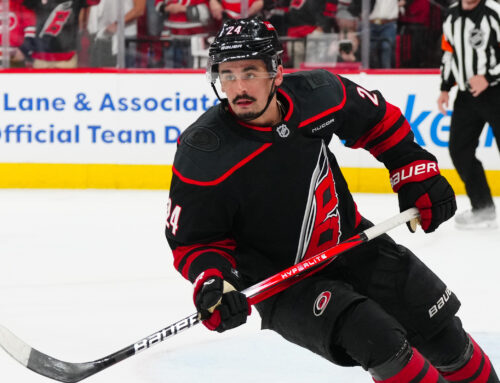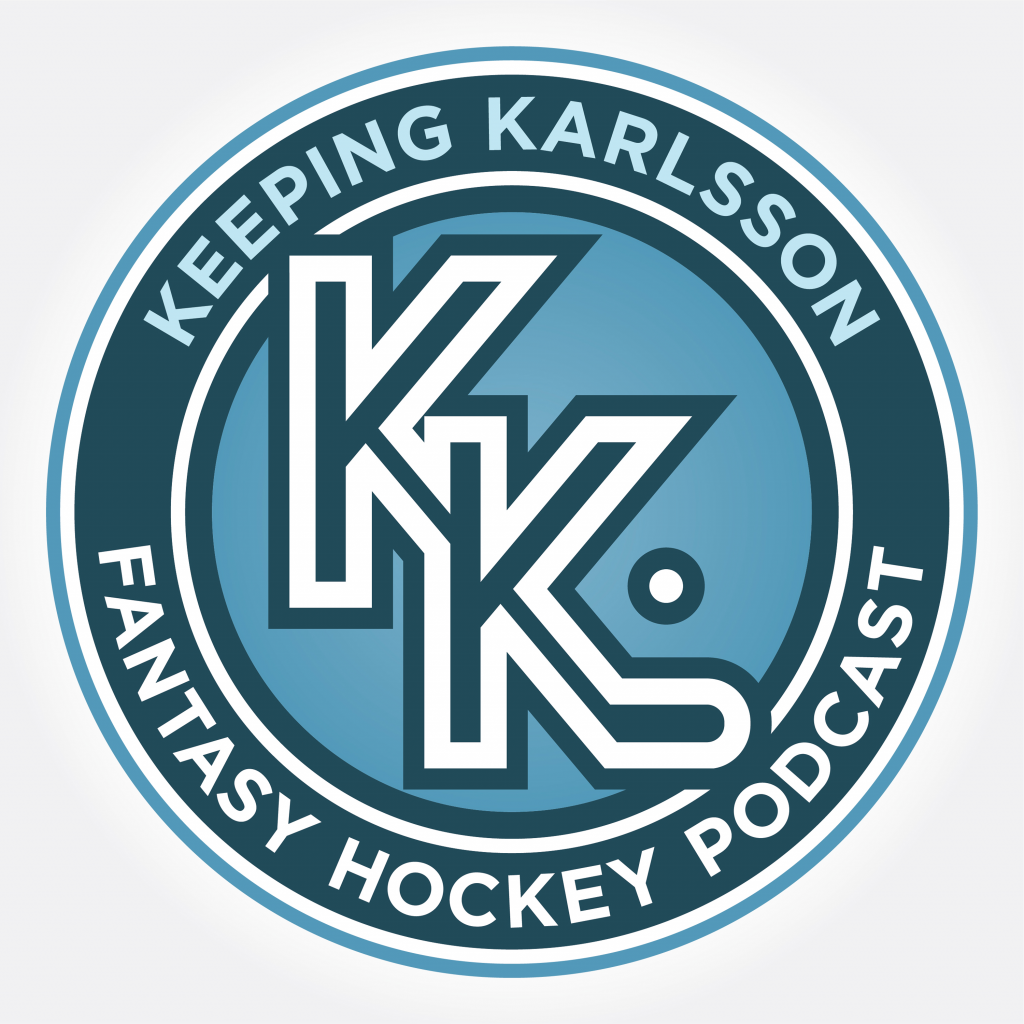Heading into the 4 Nations Faceoff, we can pause to take inventory of major storylines and trends around the Eastern Conference with fantasy implications.
This pause can be a good time to also take inventory of our rosters ahead of many trade deadlines around the fantasy landscape. Rest of season projections and "second half performers" are a hot topic, and to get to the bottom of it – let’s look over the data. The sane course of action seemed to be to build a Google Sheet, get first and second half data for the last three seasons, and isolate the names that fit a trend.
In vetting the lists for sample sizes, some parameters were needed to thin the herd:
- Remove any player who played less than 25 games total
- Remove any player who played in less than 10 games in either half of the season
- Remove players who did not break a 16 (0.2 Points/Game) point pace in either half of the season
Once all of these parameters have been met, the list of names who have had a second half that was 25% better than their first half in more than one season was 47 names long.
Players who improved by 25% or more in all three seasons: Barrett Hayton, Gustav Nyquist, Jake Evans, Kyle Palmieri, Nikita Zadorov.
Players who improved by 25% or more in two out of the three seasons:

If we widen the net to players who improved their play in the second half of the season by 10% or more – in at least two of the past three seasons, the player list explodes to a total of 111 names. Because we only cover the Eastern Conference here, I will highlight some of the more prominent Eastern Conference players and dive into their 2024-25 seasons to see if they could potentially be worth targeting.

The Eastern Conference names that stand out at a 10% or greater improvement, at least the names that are of the caliber to make a bigger difference in our fantasy seasons are:
Yahoo Ownership % in Parentheses
All 3 Seasons:
Dylan Strome (79%)
Matthew Tkachuk (100%)
Alexis Lafreniere (61%)
Kyle Palmieri (15%)
Patrick Kane (56%)
Players who had better second halves in two of the three seasons who meet these criteria:
2022-23 and 2023-24 Only:
Owen Tippett (64%)
Sam Bennett (52%)
Seth Jones (67%)
Teuvo Teravainen (15%)
2021-22 & 2022-23 Only:
Aleksander Barkov (97%)
J.T. Miller (98%)
Justin Faulk (16%)
Noah Dobson (89%) – LTIR
Patrik Laine (48%)
Rickard Rakell (74%)
Sam Reinhart (100%)
2021-22 & 2023-24 Only:
Auston Matthews (100%)
Brayden Schenn (25%)
If we take this list of players and view their aggregate totals over these three seasons, we can start to see some of the more dominant players in second halves.

Patrik Laine potentially would have made all three lists, but injury kept him from meeting the parameters to be applicable in 2023-24.
A 75% increase in second half performance is misleading to a certain degree due to small sample sizes. In 2022-23 Laine played 24 games in his first half and 31 games in the second half. Despite improving his points per game pace from 0.66 to 1.16, 11 of these games were multipoint games and nine games he went without a point. It also seems unfair to label any player who has changed teams as being a "lock" for being a "second half player".
Laine has played 14 games in the first calendar half of the 2024-25 season and 14 games in the back half, so far his second half has been far less productive.

Dylan Strome is another name to explore. His first half was electric so far this season. It's hard to imagine beating out 46 points in his first 43 games, but a 51% uptick over three years in the second half is hard to ignore.
In 2023-24 Strome increased his first half's 51-point pace to a point per game pace in the second half. In 2022-23 Strome's 57-point pace in the first half increased to a 74-point pace in the second half. In 2021-22 Dylan Strome was a Chicago Blackhawk, having missed some time due to injury Strome's first half by way of team games had resulted in a 35-point pace, which improved to a 72-point pace in his second half with the Hawks. In 2024-25, Strome is 14 games into his second half carrying nine points – a 41.4% drop in his second half so far.
Matthew Tkachuk is the final deep dive of this article. Carrying a six-game hot streak into the Four Nations break with 13 points certainly bodes well for a potential continuance of an increased second half performance. He's on exactly the same point pace as last year from a full season scope – but let's check in on the respective first and second halves.
In aggregate Matthew Tkachuk carries a 27.75% increase in second half performance over the last three seasons altogether.
2023-24 – 1st Half: 39 points in 40 games played, 2nd Half: 49 in 40.
2022-23 – 1st Half: 52 points in 40 games played, 2nd Half: 57 in 39.
2021-22 (with CGY) – 44 points in 40 games played, 60 in 42.
This season Tkachuk is aligned most closely with his 2023-24 points per game pace of 90 points. Florida's halfway point (Game 41) was January 6. Tkachuk was exactly a point per game through 36 games to that point, but in the 16 games since Florida's halfway point, Tkachuk has 21 points in 16 games, increasing his point production so far by 31.25%.
To end this article, I will share some other screenshots from my analysis that you may find interesting.
Top 40 second half players, total first half points plus total second half points over the entire three-year span.

Same criteria as above, but removing any player under 0.5 points per game over the three-year span – filtering for impact players with a redraft focus:

It wouldn't be fun unless we also included the worst second-half performers in aggregate over the three-year timeframe:

If we filter out the players who score <= 0.5 points per game and run the same report, here are the biggest decreases in second half performance in aggregate over a three-season span:

I hope you all enjoyed this strange experiment. So often around this time of year, we hear about these second-half performers and it felt like some hard data was needed to back it up. Though it's only a three-year sample, and the parameters removed players such as Dylan Guenther from the pool, it was interesting to learn about as the experiment progressed. Hope you were able to garner something from this as well.
That's our Eastern Edge Eastern Conference update for the week. Thank you for reading, as always feel free to chirp me in the comments below, in the Fantasy Hockey Discord or you can reach out on X – @FHFHockey. In the meantime, you can catch updates from me on the Five Hole Fantasy Hockey Podcast.





 FLA
FLA CHI
CHI NYR
NYR PIT
PIT L.A
L.A COL
COL MTL
MTL ANA
ANA STL
STL N.J
N.J VAN
VAN DET
DET
